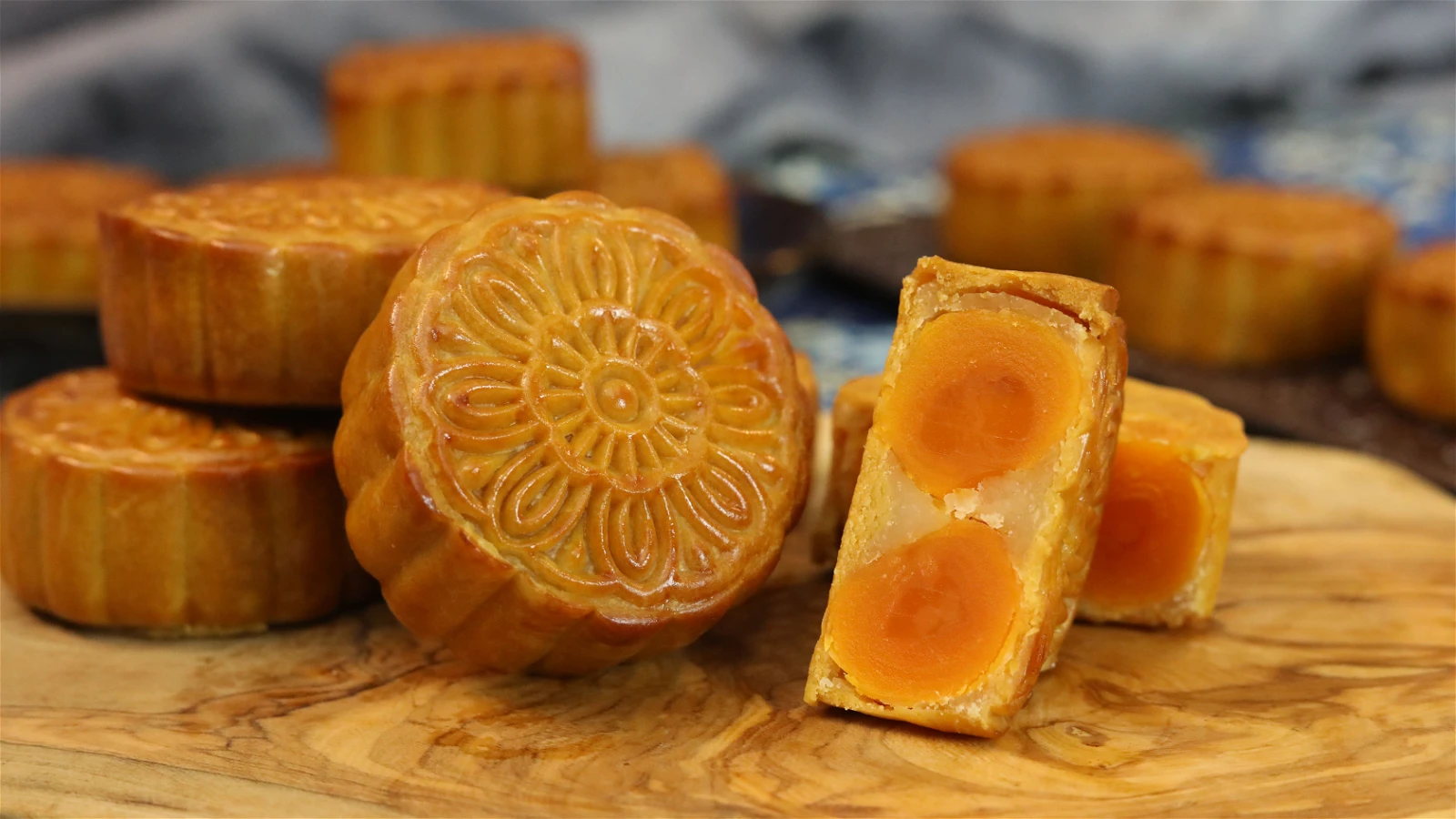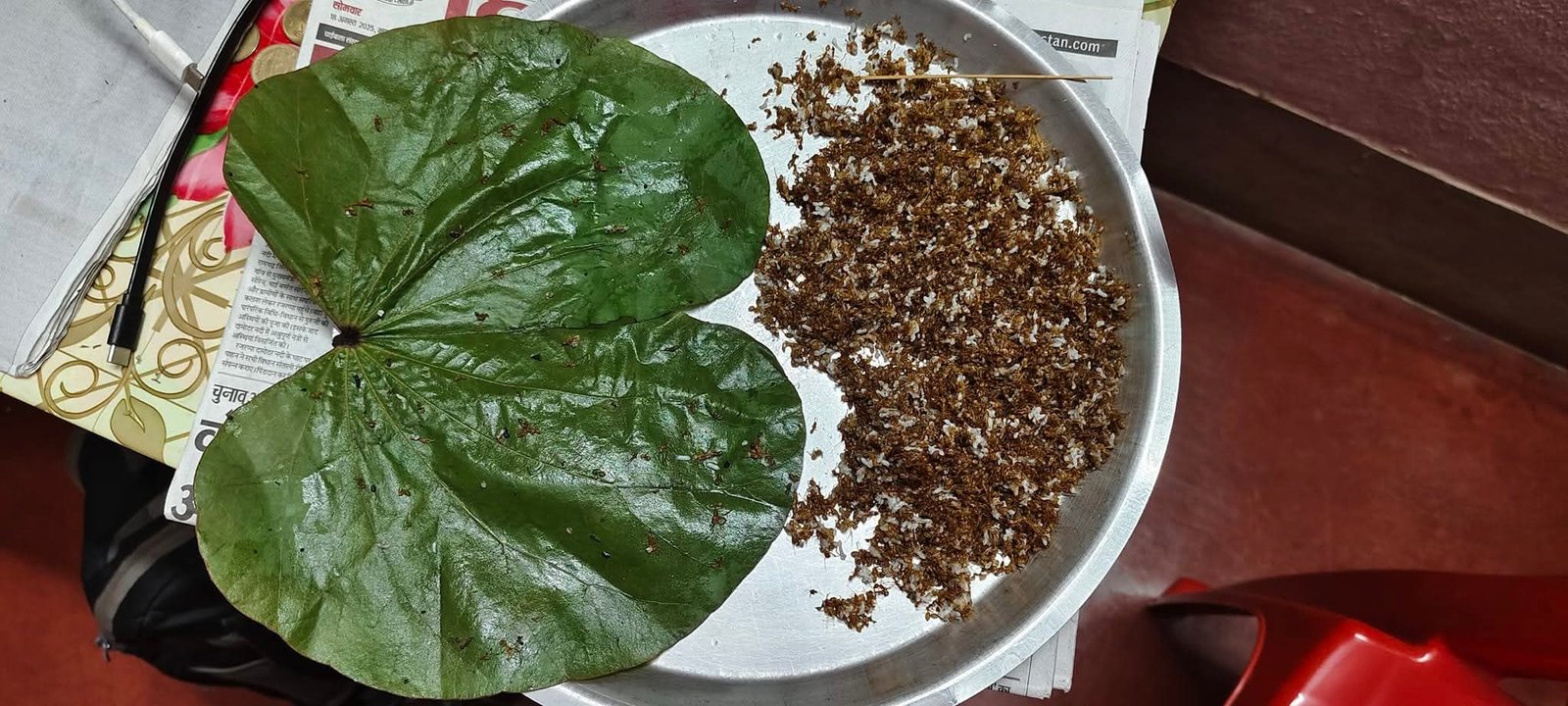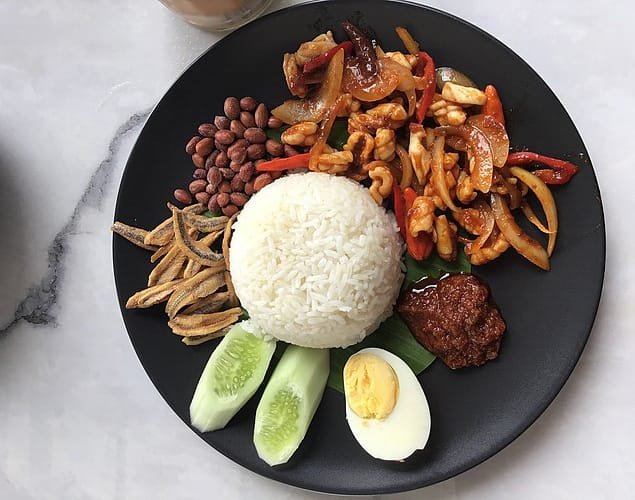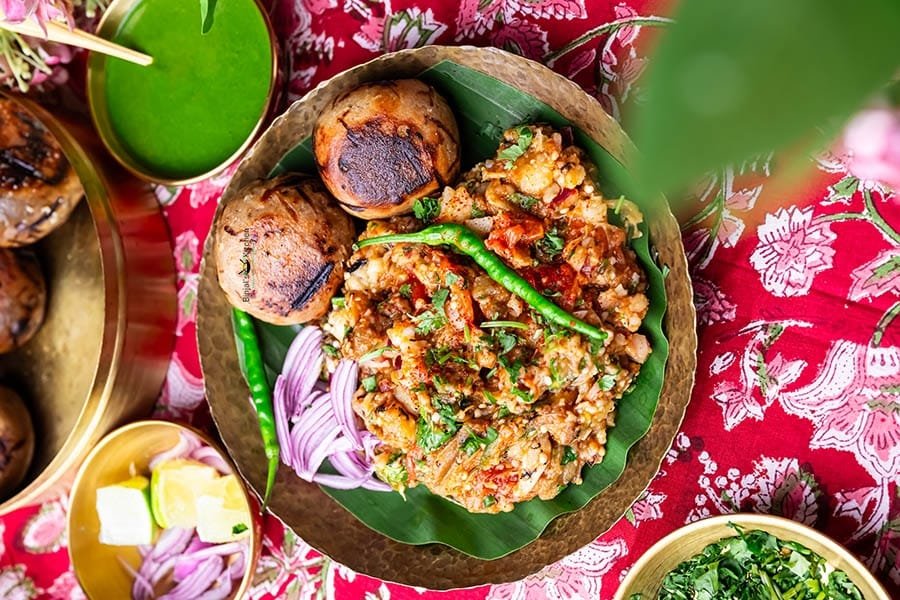The Philippines is an archipelago of over 7,000 islands, and its cuisine is just as vibrant and diverse as its geography. A fascinating fusion of Malay, Spanish, Chinese, and American influences, Filipino food is a captivating journey for the palate. It’s a cuisine of bold, contrasting flavors—savory, tangy, sweet, and salty often appear in a single dish—and is built for comfort and sharing. From sizzling street food to elaborate fiesta centerpieces, this list explores the top 10 must-try dishes that form the heart and soul of Philippine gastronomy.
- Adobo
Often called the unofficial national dish of the Philippines. It’s a cooking method where meat (most commonly chicken and/or pork) is marinated and simmered in a mixture of soy sauce, vinegar, garlic, bay leaves, and black peppercorns. The result is a savory, tangy, and incredibly flavorful stew that is perfect with steamed rice. Its vinegar content also means it keeps well.
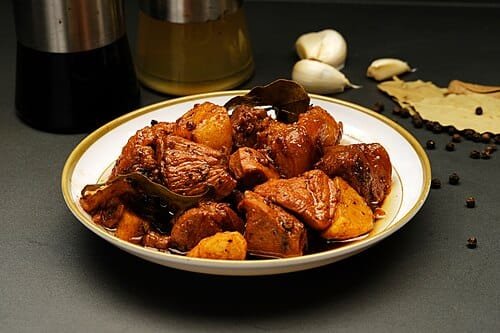
- Sinigang
A close contender for the title of national dish, Sinigang is the ultimate comfort food. It’s a sour and savory tamarind-based soup (though other fruits like guava or calamansi can be used) filled with tender meat or seafood and a variety of vegetables like water spinach (kangkong), string beans, radish, and eggplant. Its signature refreshing, sour broth is utterly addictive.
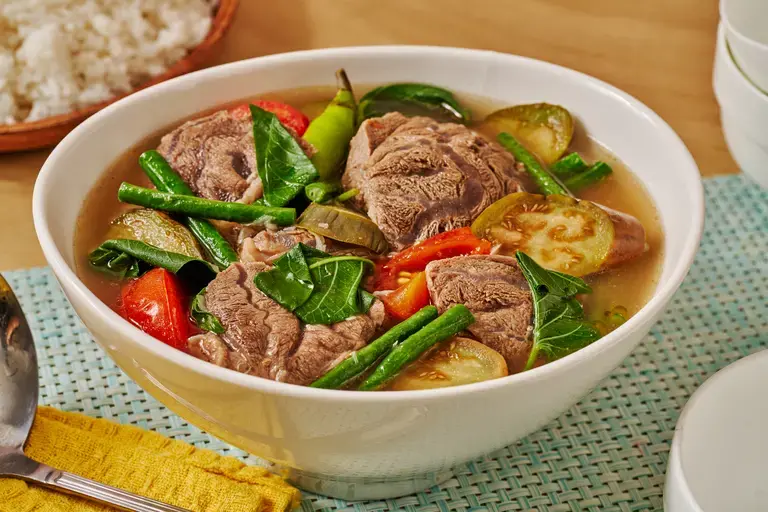
- Lechon
The king of Philippine fiestas and celebrations. Lechon is a whole pig slowly roasted over charcoal for hours until the skin becomes impossibly crispy and the meat is incredibly juicy and flavorful. It’s often stuffed with lemongrass, onions, and garlic. The city of Cebu is particularly famous for its lechon. No major party is complete without it.
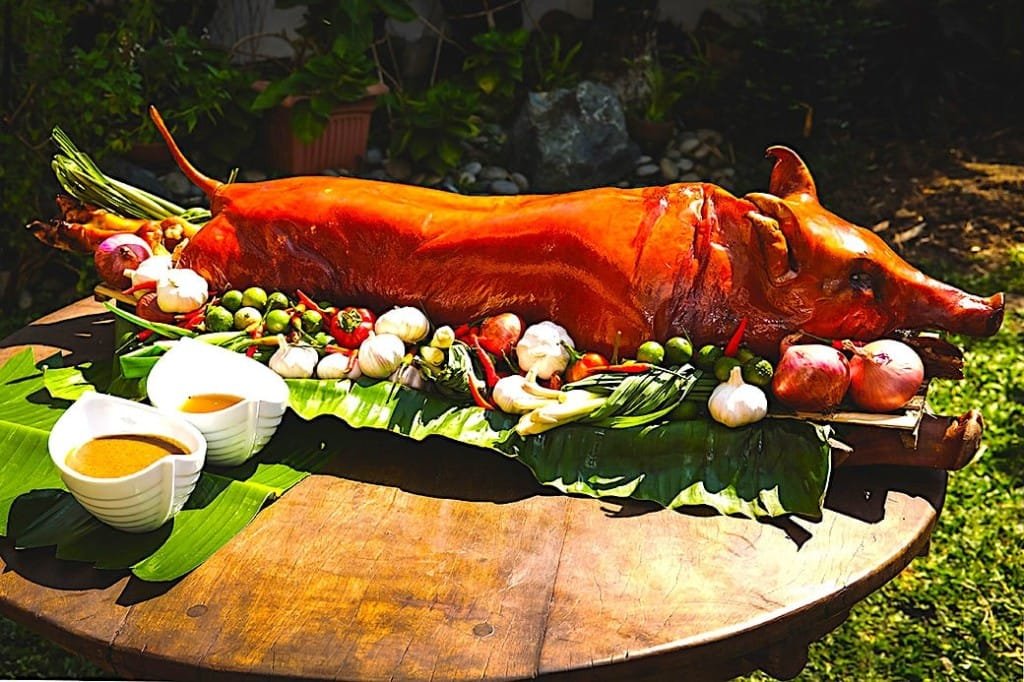
- Sisig
Hailing from the culinary capital of Pampanga, Sisig is a glorious sizzling plate made from chopped parts of a pig’s head (cheek, ears) and liver, usually seasoned with calamansi, onions, and chili peppers. It’s crunchy, tangy, savory, and spicy all at once. Originally a pulutan (beer food), it’s now a popular main dish served on a hot iron plate with a raw egg on top.
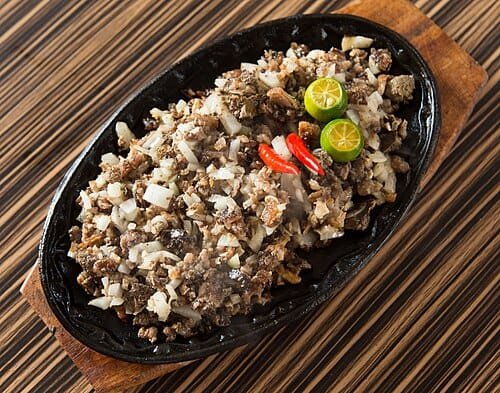
- Crispy Pata
A dish for true meat lovers. Crispy Pata is a whole pig’s leg (trotter) that is boiled, tenderized, and then deep-fried to perfection. The skill lies in achieving a crackling, crispy skin while keeping the inside moist and tender. It’s served with a soy-vinegar dipping sauce with lots of garlic.
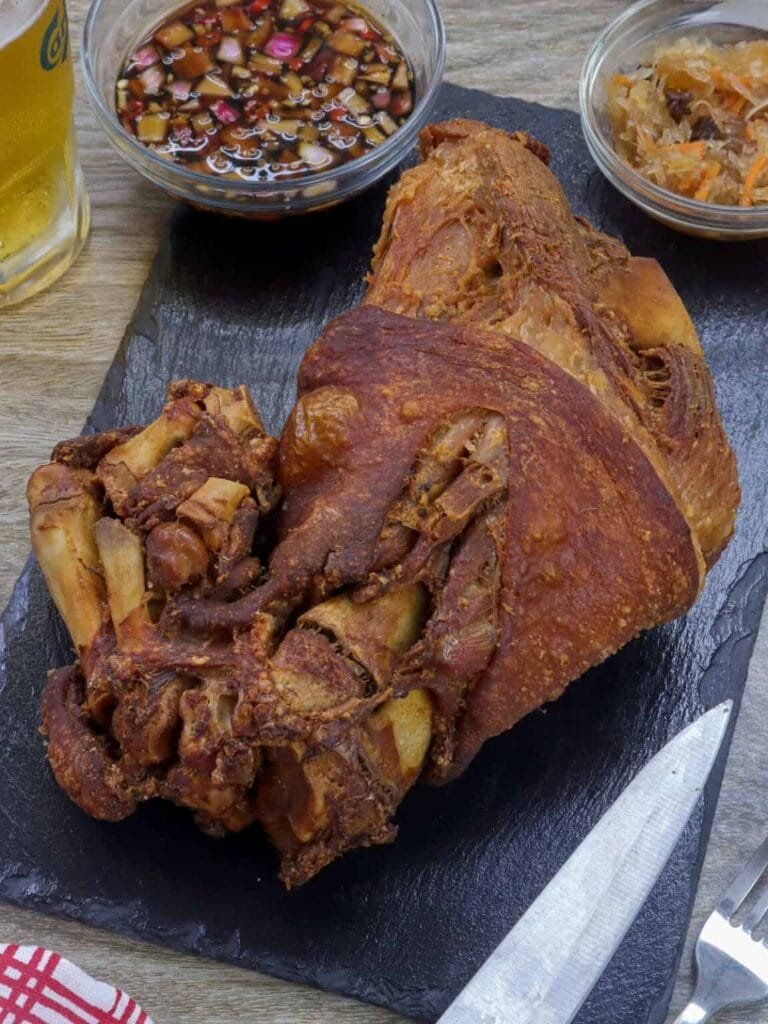
- Kare-Kare
A rich, savory, and nutty stew made with a base of ground roasted rice and crushed peanuts. It’s traditionally made with oxtail, tripe, and vegetables (eggplant, string beans, and banana blossom). It’s always eaten with a side of bagoong (fermented shrimp paste) to provide a salty, umami contrast. A labor of love often served at special occasions.
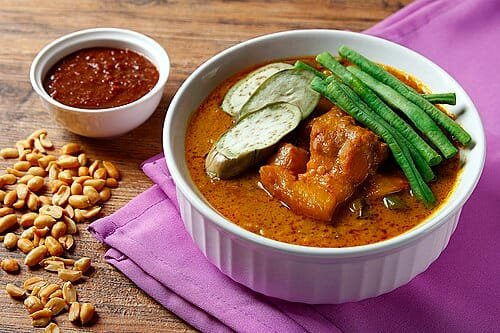
- Pancit
Pancit is the general term for noodles, symbolizing long life and health. There are countless varieties, but two of the most popular are:
· Pancit Guisado/Bihon: Stir-fried rice noodles with soy sauce, citrus, vegetables, and a bit of meat or shrimp.
· Pancit Canton: Yellow wheat noodles stir-fried with a savory sauce, similar to chow mein. It’s a staple at birthdays and family gatherings.
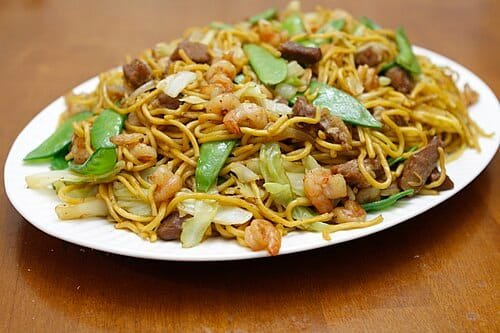
- Halo-Halo
The quintessential Philippine dessert to beat the heat. Halo-Halo literally means “mix-mix.” It’s a colorful concoction of shaved ice, evaporated milk, and a wild assortment of ingredients underneath like sweetened beans, fruits, jellies, ube (purple yam) jam, leche flan (custard), and topped with a scoop of ice cream. You mix it all together before eating.

- Lumpia
The Philippine version of spring rolls. They come in two main forms:
· Lumpiang Shanghai: Small, thin, crispy fried rolls filled with ground pork or beef. The most popular party appetizer.
· Lumpiang Sariwa/Fresh Lumpia: A fresh, soft wrapper filled with blanched vegetables and sometimes meat, topped with a sweet garlic sauce and crushed peanuts.
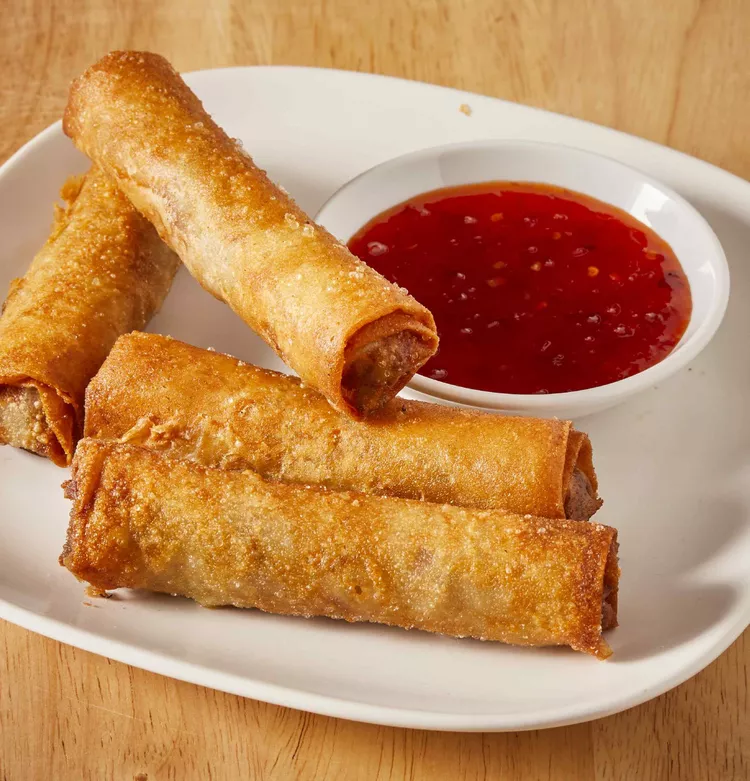
- Chicken Inasal
A specialty from the Western Visayas region (especially Bacolod). Inasal is chicken marinated in a mixture of calamansi, pepper, vinegar, and annatto oil, then grilled over hot coals. This gives the chicken a distinct yellowish color and a smoky, tangy, and slightly citrusy flavor. It’s best eaten with rice, often drizzled with the marinade oil and chicken oil.
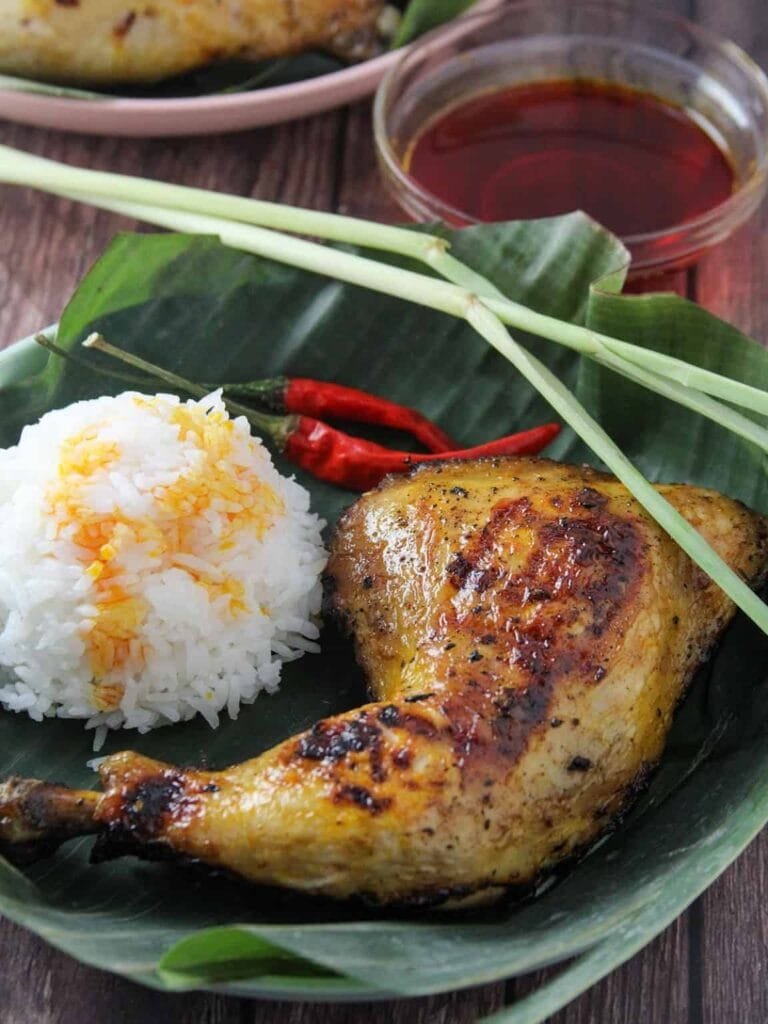
Honorable Mentions:
· Balut: The infamous fertilized duck egg, a beloved street food and test of courage for visitors.
· Tapsilog: The most famous silog breakfast combo: cured beef (tapa), garlic rice (sinangag), and a fried egg (itlog).
· Champorado: A sweet chocolate rice porridge, often paired with salty dried fish (tuyo).
· Bicol Express: A fiery stew from the Bicol region made with pork, coconut milk, and plenty of chili peppers.
· Bulalo: A light but incredibly flavorful beef marrow bone soup, a specialty from the Southern Luzon region.
Enjoy your culinary journey through the Philippines! Masarap! (Delicious!)








